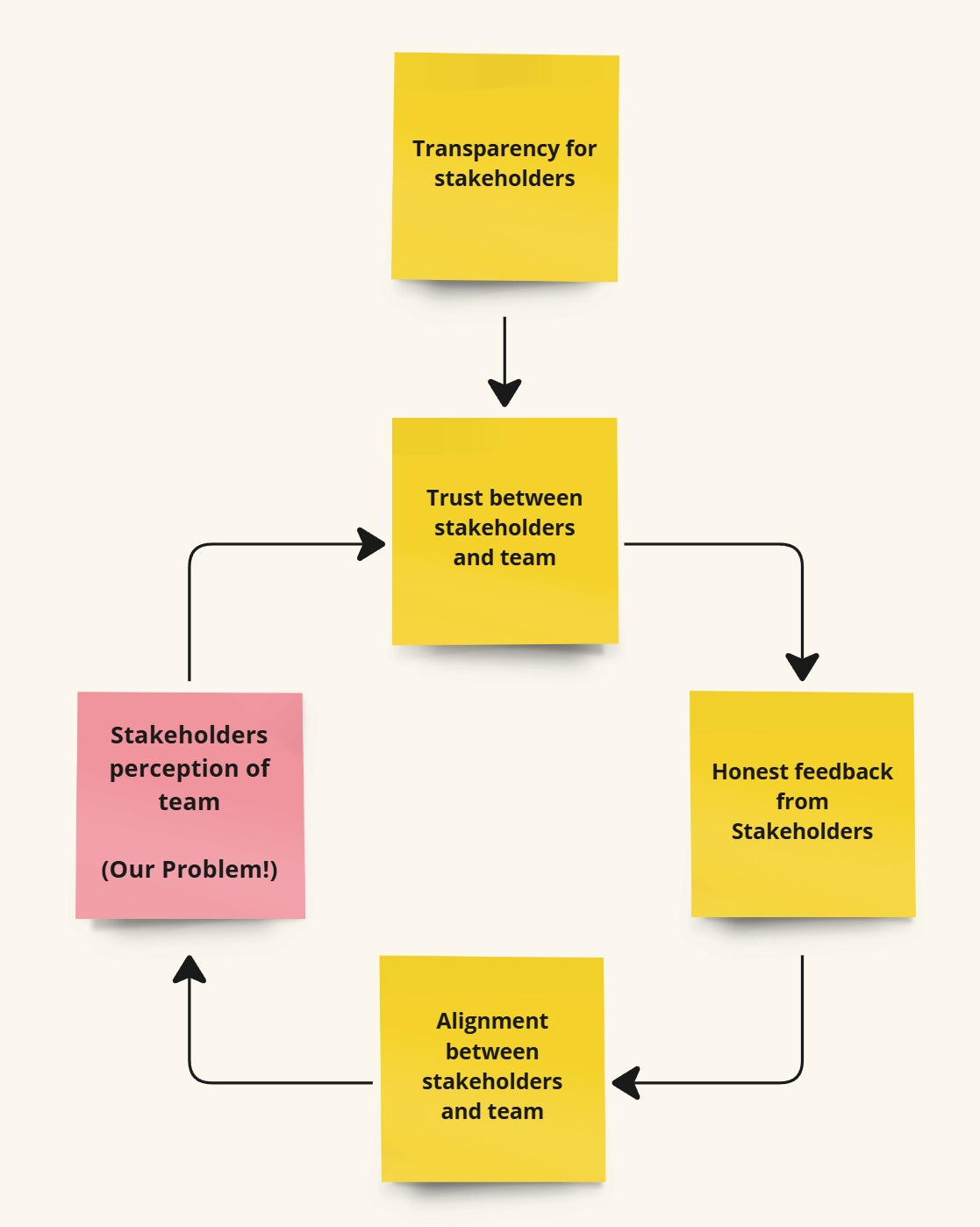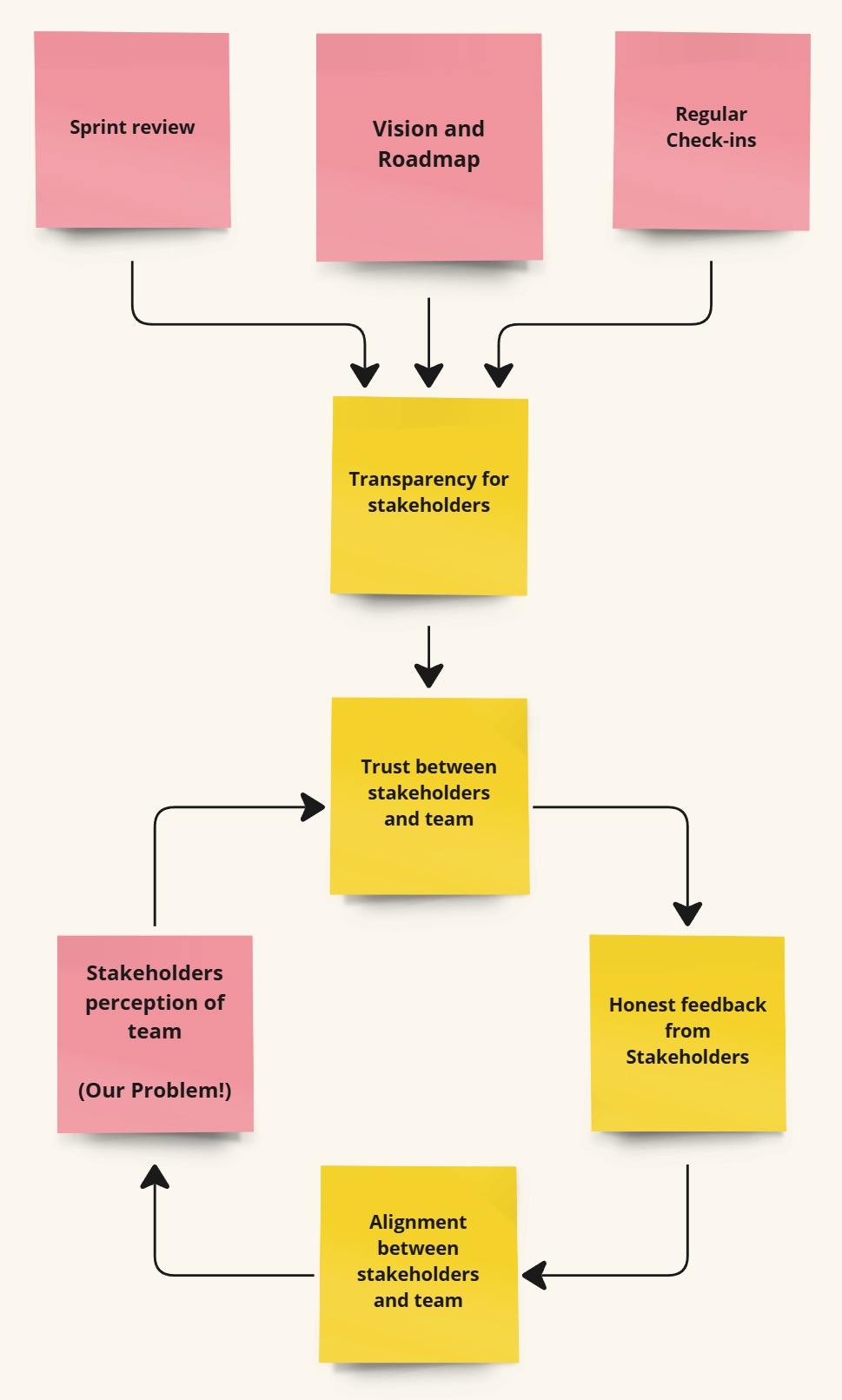Why Stakeholders Are Unhappy and Your Team Doesn’t Even Know It
Lack of transparency creates a gap between the team and stakeholders
Intro
Ever felt like your team and stakeholders were speaking two different languages?You’re not alone. A friend of mine, who recently started taking on some engineering manager responsibilities, shared a story about a disconnect between their team and senior stakeholders—a common situation that often goes unnoticed until it’s too late.
In this article, we’ll look at what these gaps are, why they happen, and, most importantly, how you can fix them.
What does the gap between team and stakeholders look like?
During a town hall meeting, senior stakeholders indirectly mentioned the team’s weak results and slow value delivery to clients. However, the Product Owner and the team didn’t recognize the stakeholders' dissatisfaction and didn’t raise these issues during retrospectives.
Situations like this are common. Some other examples you may faced:
The product owner assumes that the team understands the priority of a feature without clearly communicating it, leading to a missed deadline and a loss of trust.
After adopting a new technology stack, stakeholders expect the engineering team to ramp up delivery speed immediately. However, the team struggles with adaptation challenges, while believing they are on track with their goals.
What is the root cause?
Let’s break this down with a simple Causal Loop Diagram (CLD). This handy visual approach helps map out relationships and feedback loops in a system, making it easier to understand how things work and where they can improve. In our case, we’ll use it to explore what’s driving stakeholders’ negative perception of the team’s work.
Transparency is the foundation of this cycle — it builds trust and encourages honest constructive feedback from stakeholders. Through open communication, the team and stakeholders align and develop a better understanding of each other, strengthening the relationship. This creates a reinforcing cycle where transparency and trust continually feed into better alignment and communication, leading to achieving real goals.
Many people don’t provide constructive feedback by default. You need to constantly invest time in maintaining transparent communication and building trust between stakeholders and the team.
After discussing with a friend and conducting a brief analysis, we assumed that the lack of transparency is influenced by the following factors:
The company doesn’t hold sprint reviews. Without them, there’s no clear picture of the team’s progress, making it difficult for stakeholders to track how work is moving forward or offer meaningful feedback.
There’s no clear product vision or roadmap. Without these guiding documents, stakeholders don’t have a good sense of the long-term goals or timelines.
Regular check-ins for stakeholder feedback are missing. As a result, the team doesn’t receive timely insights on stakeholder expectations.
What to do if you encounter something similar?
Analyze the situation. When we talk about expectations gaps, the main issues are often a lack of transparency and the absence of communication between stakeholders and the team. But you might face something else. For example, differences in communication styles, cultural or organizational barriers.
Develop a clear vision and roadmap. In the case of large organizations, this could also include OKRs, architectural proposals and technical programs, all of which need to be aligned with key stakeholders. For a smaller startup, it could be a product vision outlined in a few sentences. The key is that it should be documented, and all stakeholders should know where to find it.
Leverage key data. Use the most important metrics to make plans or forecasts. This significantly improves transparency and strengthens trust that you understand and control the situation. For example, you may use team velocity to estimate the project timeline, adjusting it for vacations.
Establish consistent check-ins. Set up a regular cadence for updates and discussions to keep stakeholders informed and engaged. These can include on-site sessions, regular one-on-one zoom meetings, online monthly check-ins with key stakeholders, Slack channels, and email updates.
Ensure Sprint Reviews are meaningful. Focus on showcasing progress, challenges, and the value delivered. This approach works best in organizations with a strong culture of direct feedback and a well-implemented Scrum or similar framework.
Foster an open dialogue culture. Encourage stakeholders to provide feedback and raise any concerns early in the process.
Not everything will always be within your control. Some people may struggle with trust, lack transparency about their expectations, frequently change their oppinion without reason, or pursue personal goals they’re unwilling to share. Influencing such individuals can be a long or even impossible task, which may require different solutions.
Final Thoughts
Establishing transparency and ensuring alignment between the team and stakeholders are some of the most critical responsibilities for Engineering Manager, Scrum Master, and Product Owner. But only you can bridge gaps between the team and stakeholders, even in the most challenging environments.
Thanks for reading and if you found this helpful, feel free to share it with a friend or colleague who might benefit from these insights!







